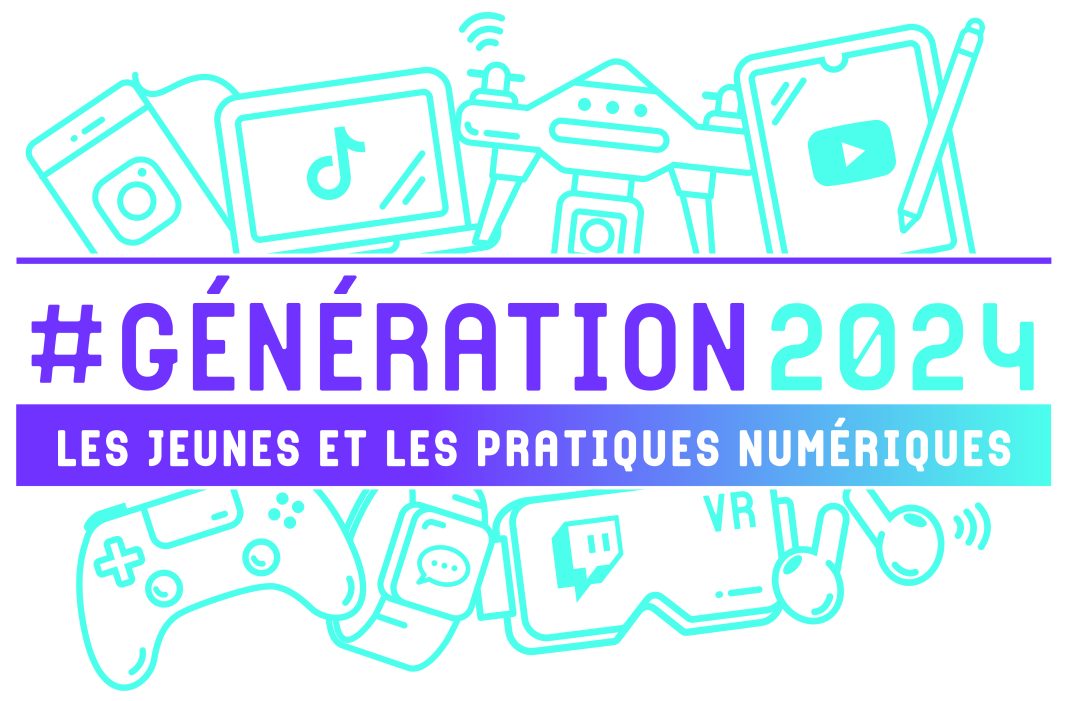Discover the results of the #Génération2024 survey, which paints a picture of young people’s digital practices in French-speaking Belgium
By Anne-Claire Orban, European projects coordinator and trainer
The results of #Génération2020, the first extensive survey of children’s and teens’ digital practices in Belgium’s Wallonia-Brussels Federation, were published in 2020. With #Génération2024, Média Animation and the Conseil Supérieur de l’Éducation aux Médias (CSEM) are repeating the exercise.
More than 3,700 primary and secondary school pupils from 43 schools in the FW-B region completed an age-appropriate questionnaire on various aspects of their digital lives. In addition to this quantitative data, individual interviews and group discussions were also carried out to explore the multiple themes in greater depth.
Some results…
The results show that children and adolescents in the Fédération Wallonie-Bruxelles have access to various screens, with variations depending on age and context.
As of 2020, children in primary years 1 to 4 say that television is the most commonly used device (87%). More than half of them follow the telephone, games console, and tablet and use them. Among teenagers (aged 11-18), the results show that cell phones (92%) and televisions (90%) are the most popular screens, closely followed by computers and game consoles.
99% of young people between 13 and 14 have their phone. It is the most widely used device daily.

Regarding digital activities and hobbies, children from primary 1 to 4 massively turn to video games, films, series, or TV shows. Although already present in children’s digital habits, the use of social networks becomes significant as they enter secondary school and only increases after that. These spaces (social networks and the video game world) are also meeting places. 62% of high school students report having made friends online. The proportion of teenagers reporting that they have started a romantic relationship following an online encounter is not negligible either and naturally increases with age.
While considerable attention is paid to young people’s use of social networks, video games sometimes need to be addressed. Yet the survey shows that more than 9 out of 10 teenagers claim to play at least one video game a month.
The social dimension of video games should be considered: more than half of them also play with family members, such as siblings, parents, and cousins. And 38% with friends.
The #Génération2020 survey already showed that children and teenagers are subject to rules regarding the use of digital media at home. This survey reveals a positive perception of these rules on the part of young people while highlighting a lack of exemplarity on the part of adults about these same rules.
More surprisingly, the survey also reveals that, despite an accepted framework and rules, what’s surprising is the growing feeling of “wasting time” as the age of the respondents increases.
In terms of access to information, #Génération2024 confirms the previous survey. Social networks continue to represent an essential information channel for young people. Instagram, TikTok, and YouTube are the preferred information vectors for secondary school students.
The news and information that young people consult seem to come from various sources: information from influencers or other web celebrities, content relayed by those around them, articles highlighted by so-called “traditional” news media, or content produced by unknown sources and individuals.
Although young people claim to get most of their information from social networks, they also mistrust the integrity of information disseminated on these platforms and, more generally, of all information communicated online. Figures showing that many secondary school students do not perceive social networks as reliable sources of information confirm this trend.
For young people, newspapers and television remain the most trustworthy media, but their content is considered unappealing, unlike social networks, which are captivating but wary. Finally, the survey highlights several figures relating to the safety and violence young people face. According to the data collected, around 15% of teenagers say they have been harassed online several times in the past year. In comparison, 40% say they have witnessed online harassment during the same period.
When confronted with cyberbullying problems, parents and friends are the first sources of help identified, while school staff are not, for over 80% of young people.
Conclusion
As children and teenagers evolve in an ever-changing, connected world, it is crucial to offer them support tailored to their digital practices.
This new survey aims to explore new themes and update data from the previous study. The latter’s development informs every parent and citizen interested in these issues and highlights objective numerical trends likely to guide educational strategies and the work of media literacy professionals. Based on this data, media education professionals will be able to develop appropriate teaching resources to foster positive and safe digital experiences for all.


